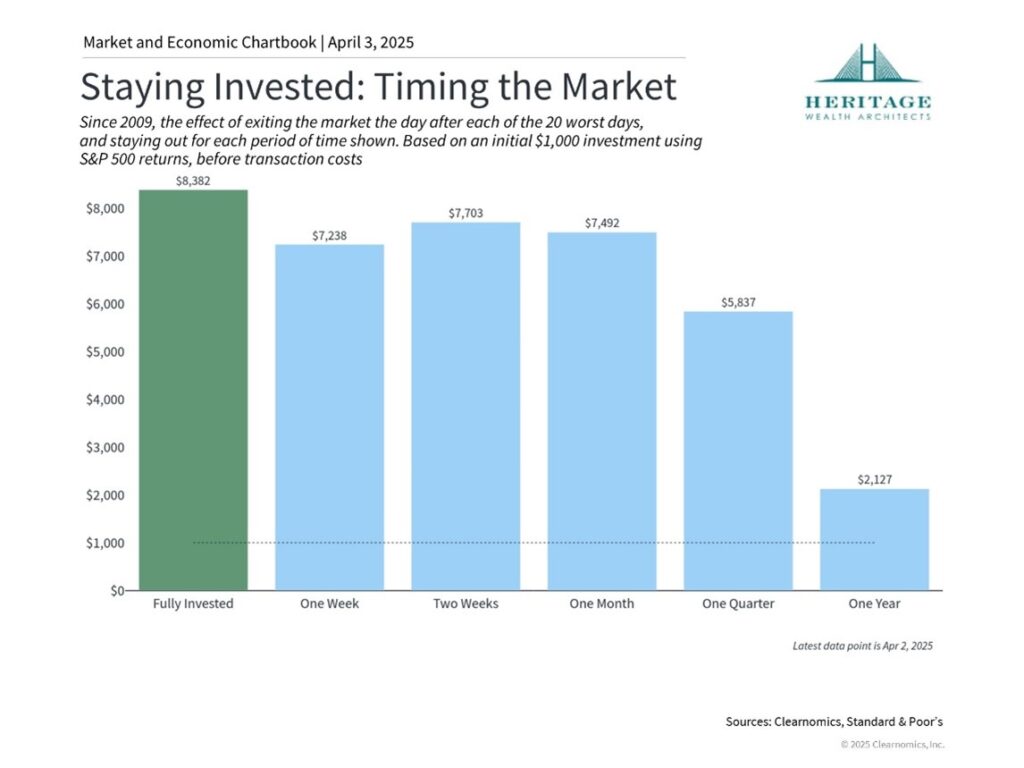How to Protect Your Portfolio During Market Volatility

As the markets start 2025 on a volatile note, many investors are wondering how to protect their portfolios. The answer is simple but emotionally challenging: avoid drastic actions and trust your well-diversified, long-term strategy.
Remember: Market Downturns Are Normal
Market corrections of 10% tend to happen every other year on average. These downturns don’t always signal an overall negative year. The key to navigating volatility is sticking to your long-term investment strategy. History shows that disciplined investors, who stay invested through market cycles, often outperform those who try to time the market. This underscores the importance of adhering to your pre-determined strategy.
Opportunities Amid Volatility
Market dips can present opportunities. As Warren Buffett famously said, be “fearful when others are greedy, and greedy when others are fearful.” In times of volatility, consider buying undervalued assets or reallocating your portfolio to take advantage of lower prices.
For new investments, dollar-cost averaging can be an effective strategy. By consistently contributing a set amount to your portfolio—such as monthly savings—you remove emotion from the process and avoid reacting to short-term market movements.
Avoid Trying to Time the Market
History has rewarded disciplined investors who remain invested through market cycles. These individuals have often achieved better outcomes than those who have tried to time the market and highlights the importance of sticking to your pre-determined strategy. This is illustrated in the chart below.

In addition, trying to time the market involves timing when to pull funds out in addition to when to re-enter. This leads to the risk of missing out on the recovery. According to Bloomberg, the “average time to recovery from a 5-10% downturn is three months. The average time to recovery from a 10-20% correct is eight months.” This also supports that staying invested during times of volatility is the smarter move.
Focus on What You Can Control
The most important thing is to focus on what’s within your control and be prepared, not reactive. A well-diversified portfolio aligned with your long-term goals and time horizon is more effective than trying to predict short-term market movements.
If you have any questions or would like personalized advice, reach out to our team at Heritage Wealth Architects.
Source:
Bloomberg, as of 8/5/24, based on the Dow Jones Industrial Average Index drawdowns and market cycles since 1945.